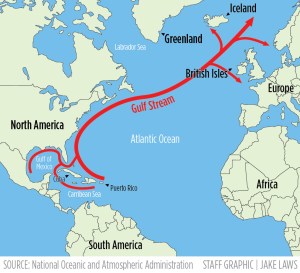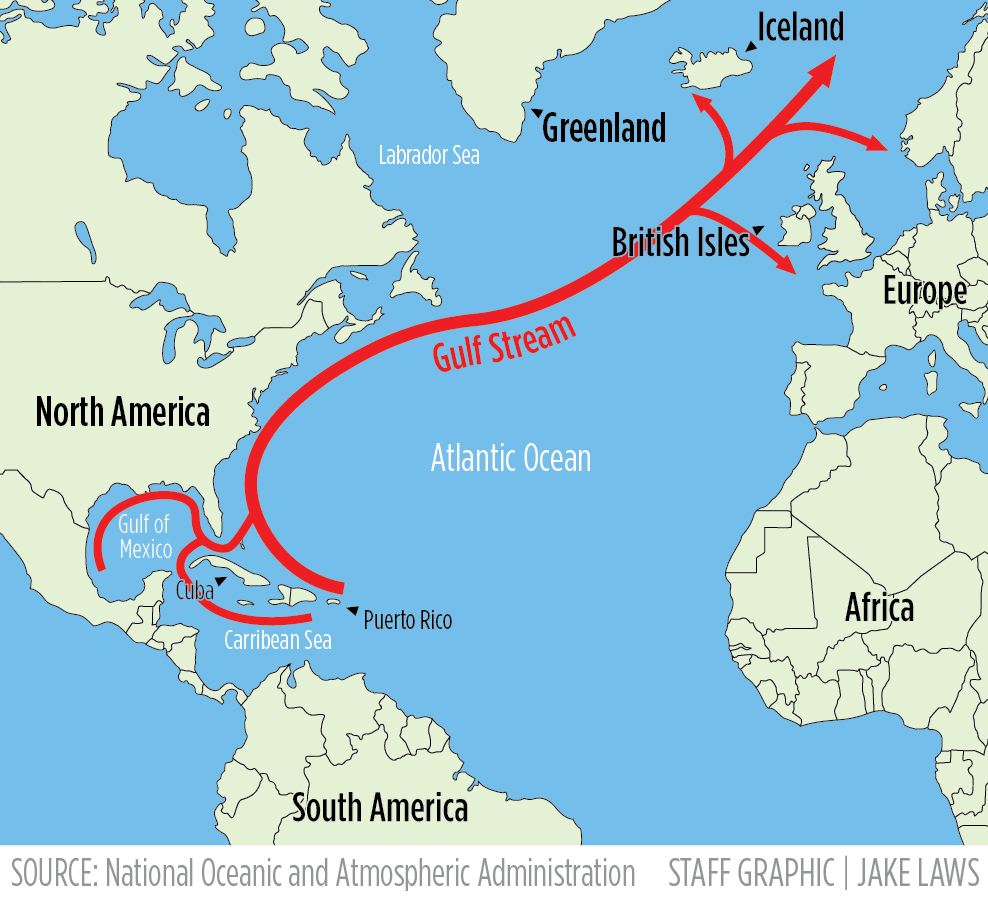According to a recent study, the Gulf Stream has been warming faster than the global oceans and moving closer to the shore over the past 20 years. This increase in temperature and proximity to the eastern continental shelf poses a potential threat to U.S. coastal fisheries.
In a study conducted by physical oceanographers Robert Todd and Alice Ren from the Woods Hole Oceanographic Institution, it was found that the Gulf Stream has warmed by 2 degrees Fahrenheit and shifted 6 miles closer to the shore since 2001. These findings were published in Nature Climate Change.

The Gulf of Maine, mainly influenced by the Labrador Current, receives colder water from the north. Although the Gulf Stream usually passes 100 miles south of the Gulf of Maine’s southern border, there are instances when warm-water breakaways from the Gulf Stream can increase temperatures in the Gulf of Maine for extended periods.
According to Todd, the lead author of the study, the increasing occurrence of warm core rings breaking away closer to the shore could have a significant impact on the Gulf of Maine’s environmental conditions and marine wildlife. These rings bring sudden temperature changes, with previously cold areas becoming warm temporarily. This temporary but long enough period of warm water can affect fish and shellfish in the region.
This study primarily focused on the Gulf Stream along the U.S. coast from Florida to Cape Cod and its eastward flow toward Europe. However, other researchers have found a doubling in the number of warm core rings formed by the Gulf Stream since 2000.
Climate center director Dave Reidmiller from the Gulf of Maine Research Institute states that the balance between Maine’s two dominant ocean currents is shifting. The Arctic-infused Labrador Current is no longer as cold as before, while the Gulf Stream is warmer and wider than ever. As a result, the Gulf of Maine will be significantly impacted by these changes.
Reidmiller suggests that even small changes in temperature can have substantial effects on marine wildlife, including cold-water species like herring and warm-water species like squid and butterfish. Puffins, a local bird species, are also altering their feeding habits for their chicks. The Gulf of Maine, spanning 36,000 square miles, is warming at a rate of approximately 1 degree per decade, four times faster than the global oceans.
Notably, this summer marked the eighth-hottest for the Gulf of Maine, according to data collected by the Gulf of Maine Research Institute. The whole North Atlantic region experienced abnormally high temperatures on land as well.
Researchers attribute this warming trend to a combination of factors, including the widening of the Gulf Stream, changes in the Labrador Current, and the weakening of a larger system of currents responsible for maintaining the energy and heat distribution in the northwest Atlantic Ocean.
The study conducted by the Woods Hole Oceanographic Institution relied on over 25,000 temperature and salinity observations collected over a 20-year period using underwater gliders and floats. These instruments, such as the floats from the Argo Program and the gliders, provide valuable data that satellites cannot capture.


